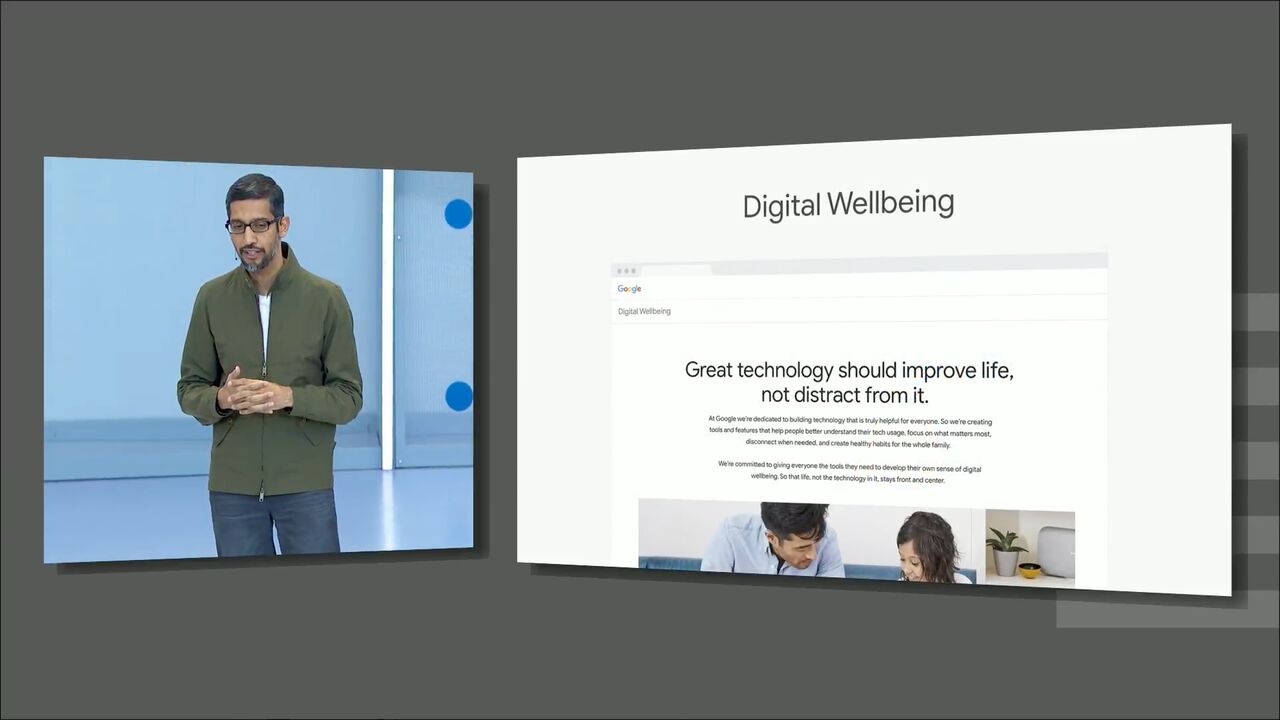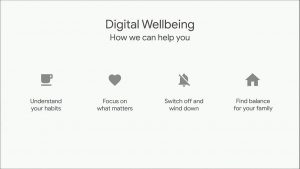
Yesterday we reported on the expectation that Google would focus on the digital wellbeing of its users. At the keynote speech at Google IO 2018 today Sundar Pichai outlined Google’s plans to help users achieve that balance.
Digital wellbeing has become an issue in recent times with people feeling and becoming more and more tethered to their devices. There is social pressure to have all the information as soon as it happens, to respond to anything right away — due to FOMO (fear of missing out). Google are planning to give users back their time with a series of controls within Android resulting in JOMO (joy of missing out). This will encompass all of Google’s products and platforms.
The plan for Google is to understand the users habits, focus the phone on what matters (using AI and ML), helping the user to switch off when you need to and help you find balance with your family.
The hub of all this control will be the Android Dashboard which will give you a full overview of how you are using your time. It will tell you the apps where you are spending your time, number of times you are unlocking your phone on a given day, the number of notifications you got, and in turn help you to deal with it better.
Beginning with YouTube, apps can be designed to remind you to take a break at a prescribed time. It will also combine (if you want to) all your YouTube notifications into a single notification per day (a daily digest). All of these features will be arriving on YouTube this week.
Pichai also mentioned Google’s Family Link and outlined their new approach to educating kids through their “Be Internet Awesome program. The Be Internet Awesome program is designed to help kids to make smart decisions and keep them secure, help make them kind and mindful when online — to help kids in the digital world.
All of Google’s Digital Wellbeing tools will be launching later today along with their Digital Wellbeing website.
As a parent of a couple of kids who definitely have FOMO this will be a very welcome tool for my arsenal to try and keep them not just safe but also interactive with the real world rather than just their device.












